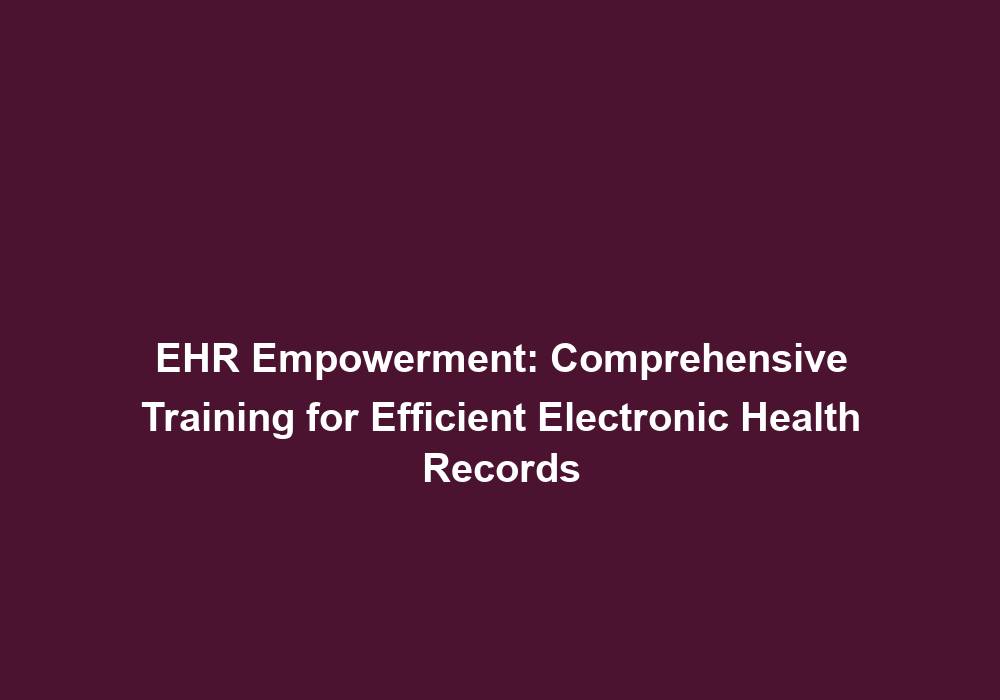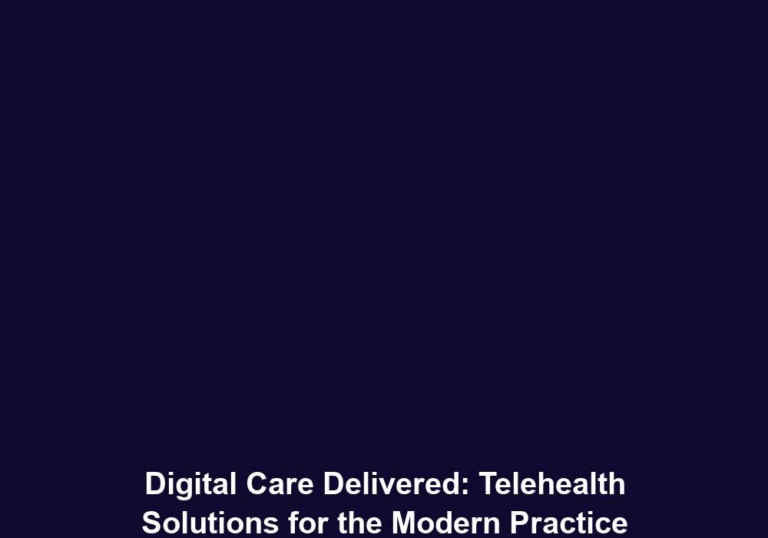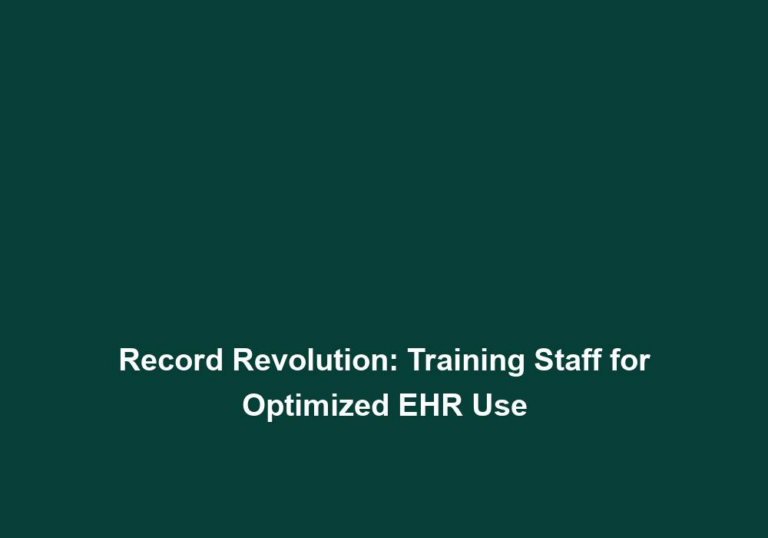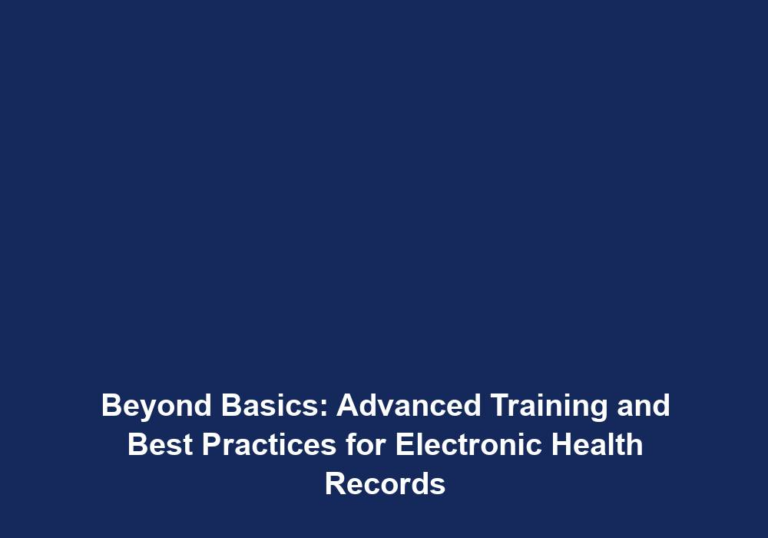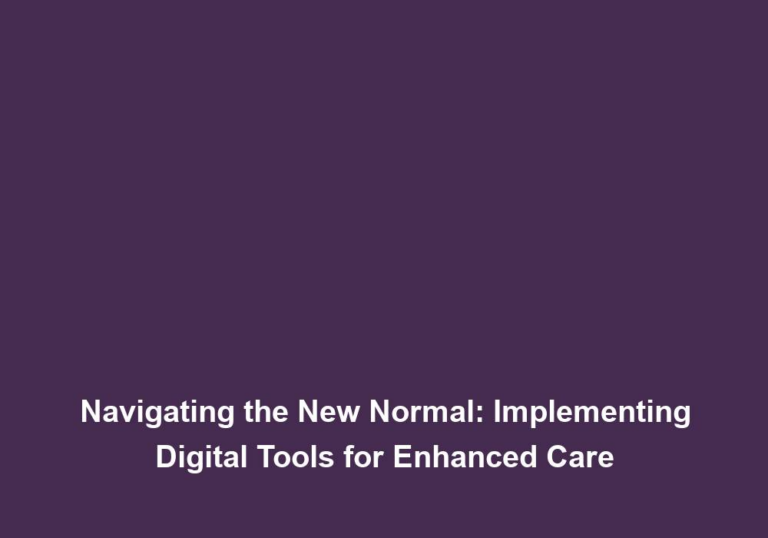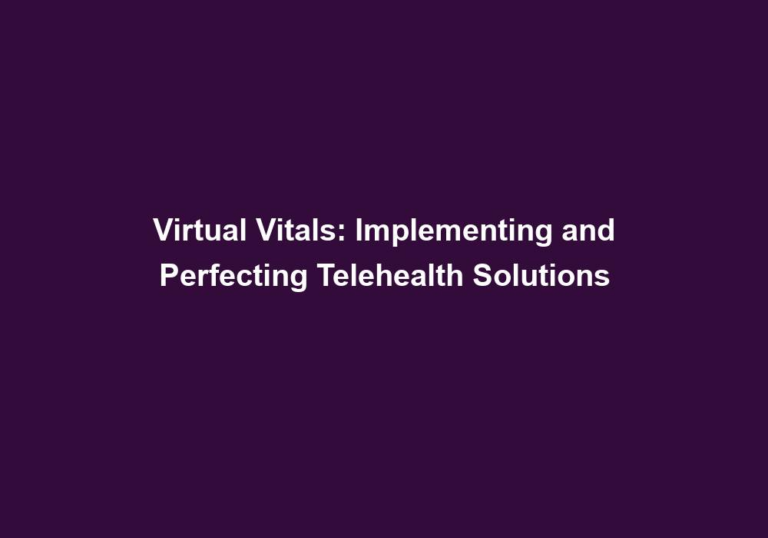EHR Empowerment: Comprehensive Training for Efficient Electronic Health Records
Electronic Health Records (EHR) have revolutionized the healthcare industry by providing a digital platform for healthcare providers to store, manage, and share patient information. This digital transformation has brought about numerous benefits, but to fully harness the potential of EHR systems, healthcare professionals require comprehensive training. In this article, we will delve into the importance of EHR training and explore the various aspects that make it efficient and effective.
Why is EHR Training Essential?
-
Improved Efficiency: EHR training equips healthcare professionals with the necessary skills to navigate and utilize EHR systems efficiently. Through comprehensive training, professionals can learn advanced techniques and shortcuts that can streamline their workflow, saving them valuable time and enhancing overall productivity. They can also become proficient in using templates and customization options provided by the EHR system, allowing for a more personalized and efficient documentation process.
-
Enhanced Patient Safety: Comprehensive EHR training focuses on understanding the features and functionalities of the system, including medication management, allergy alerts, and clinical decision support. With proper training, healthcare professionals can accurately and securely document patient information, reducing the risk of errors and improving patient safety. They can also effectively utilize drug interaction alerts and evidence-based guidelines provided by the EHR system to make informed decisions, ultimately leading to better patient outcomes.
-
Effective Communication and Collaboration: EHR training emphasizes the importance of seamless communication and collaboration among healthcare providers. Through training, professionals learn how to efficiently share patient data, exchange messages, and coordinate care, leading to improved patient outcomes. They can also learn how to leverage the interoperability features of the EHR system to securely and efficiently share patient information with other providers, labs, and healthcare organizations. This promotes a collaborative and coordinated approach to patient care.
-
Compliance with Regulations: With the ever-evolving landscape of healthcare regulations, EHR training ensures healthcare providers are up to date with the latest compliance requirements. This training covers topics such as data privacy, security, and documentation standards, enabling professionals to adhere to legal and ethical standards. By understanding and following these regulations, healthcare professionals can protect patient information, maintain data integrity, and contribute to a culture of compliance within their organizations.
Key Components of Comprehensive EHR Training
-
System Familiarization: The first step in comprehensive EHR training is familiarizing healthcare professionals with the specific EHR system they will be using. This includes understanding the user interface, navigation, and basic functionalities of the system. Through hands-on training and guided exercises, professionals can become comfortable with the system, allowing them to navigate it efficiently and effectively.
-
Data Entry and Documentation: Proper training in data entry and documentation ensures accurate and complete recording of patient information. This includes capturing patient demographics, medical histories, medications, and test results. Training should also emphasize the importance of maintaining data integrity and confidentiality. Professionals should be trained on best practices for data entry, including the use of standardized terminologies and coding systems, ensuring consistency and accuracy in documentation.
-
Clinical Decision Support: EHR systems offer valuable clinical decision support tools. Comprehensive training should cover how to effectively utilize these tools, such as drug interaction alerts, diagnostic support, and evidence-based guidelines, to enhance patient care and clinical decision-making. Professionals should be trained on how to interpret and act upon the information provided by the EHR system to make well-informed decisions that align with best practices and current guidelines.
-
Interoperability and Health Information Exchange: Comprehensive EHR training should focus on interoperability and health information exchange. Healthcare professionals need to understand how to share patient information securely and efficiently with other providers, labs, and healthcare organizations. Training should cover topics such as data exchange standards, secure messaging, and the use of standardized terminologies to ensure seamless interoperability and effective communication among different systems and stakeholders.
-
Quality Reporting and Analytics: EHR systems provide valuable data for quality reporting and analytics. Training should include instruction on how to generate reports, interpret data, and utilize analytics to improve patient outcomes and meet regulatory requirements. Professionals should be trained on how to identify key performance indicators, measure quality metrics, and leverage data-driven insights to drive continuous improvement and enhance the overall quality of care provided.
-
Privacy and Security: EHR training must prioritize privacy and security considerations. Healthcare professionals should be educated on the importance of protecting patient information, following best practices for access control, password management, and data encryption. Training should also cover the legal and ethical aspects of patient privacy and security, ensuring professionals are aware of their responsibilities and obligations in safeguarding patient data.
-
Usability and Workflow Optimization: Training should include strategies for optimizing workflow and leveraging the EHR system’s usability features. This includes customization options, shortcuts, and templates that can streamline documentation and enhance productivity. Professionals should be trained on how to personalize their user interface, create custom templates, and utilize productivity-enhancing features such as voice recognition and barcode scanning. By optimizing their workflow, professionals can maximize the benefits of the EHR system and improve their overall efficiency.
-
Continuing Education and Updates: As EHR systems evolve and new features are introduced, continuous education and updates become crucial. Training programs should emphasize the importance of staying updated with system enhancements and provide resources for ongoing learning. This can include webinars, online courses, and access to user communities where professionals can exchange knowledge and stay informed about the latest developments in EHR technology. By investing in continuous education, healthcare organizations can ensure that their professionals remain proficient in using the EHR system and can adapt to future changes and advancements.
Best Practices for EHR Training
-
Customization: Every healthcare organization has its unique workflows and requirements. Effective EHR training should allow for customization and tailoring to meet the specific needs of the organization and its professionals. Training programs should be flexible and adaptable, allowing organizations to incorporate their own policies, practices, and local regulations into the training curriculum. By customizing the training, professionals can better relate to the content and apply it directly to their daily work.
-
Hands-on Learning: Hands-on training with real-life scenarios and simulations is essential for healthcare professionals to become proficient in using the EHR system. Practical exercises and case studies can help them apply their knowledge in a controlled environment, allowing them to practice using the EHR system and experience various scenarios that they may encounter in their day-to-day work. By providing hands-on learning opportunities, organizations can ensure that professionals gain the necessary practical skills and confidence to effectively use the EHR system in their clinical practice.
-
Role-based Training: Different roles within a healthcare organization require varying levels of EHR proficiency. Tailoring training programs to specific roles ensures that professionals receive the training relevant to their responsibilities, optimizing their efficiency and effectiveness. For example, training for physicians may focus more on clinical decision support and advanced documentation, while training for nurses may emphasize data entry and coordination of care. By aligning the training with the specific needs of each role, organizations can ensure that professionals receive targeted and meaningful training that directly supports their job functions.
-
Integration with Existing Training Programs: EHR training should be integrated into existing training programs, such as onboarding and continuing education initiatives. This ensures a cohesive approach to professional development and avoids information silos. By incorporating EHR training into existing programs, organizations can create a seamless learning experience for professionals, allowing them to build upon their existing knowledge and skills. Integration also helps organizations maximize the use of resources and creates a culture of lifelong learning and continuous improvement.
In Conclusion
Comprehensive EHR training is crucial to empower healthcare professionals with the skills and knowledge needed to leverage EHR systems efficiently and effectively. By investing in comprehensive training, healthcare organizations can enhance efficiency, improve patient safety, and ensure compliance with regulations. Through a combination of system familiarization, data entry and documentation training, clinical decision support education, and an emphasis on privacy and security, healthcare professionals can confidently navigate EHR systems and provide the highest quality care to their patients. Training programs should follow best practices, such as customization, hands-on learning, role-based training, and integration with existing programs, to maximize the effectiveness of the training and support the unique needs of healthcare organizations.

